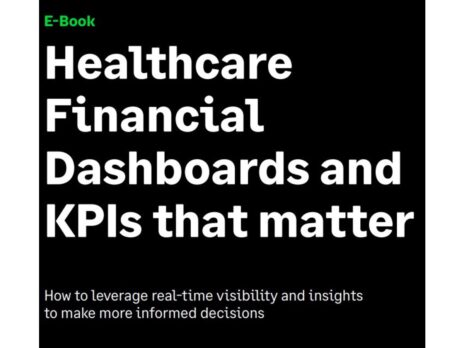
Healthcare is a sector where rising expectations often clash with poor information technology. As demand for services grows, clinicians are increasingly falling back on IT that’s ageing out or poorly suited to the heavy demands placed upon it to triage not only appointments and prescriptions, but the web of financial transactions that underpin all decisions made in the interests of the patient.
It’s a set of problems that Sage’s Intacct is designed to tackle. By automating key financial decisions, Intacct allows the user to eliminate paper-based processes, spending management, and decisions around purchasing, transactions and expenses. This is paired with design elements that provide operators with a simplified overview of spending commitments through Intacct’s dashboard, allowing them to drill into further metrics or provide the analytics necessary to discuss financial decision-making quickly and easily with colleagues.

One of the most important areas in which Intacct can help healthcare organisations regain control of their finances lies in its Advanced Audit Trail capability. Not only does this feature allow users to comply with the necessarily strict regulatory requirements guarding patient data that’s woven through financial decision-making, but does so by tracking access to contacts, suppliers and customers. This information, in turn, is logged and easily converted by Intacct into formats that support both internal and external audits of your organisation.
Intacct also offers significant workflow simplification. Instead of relying on manual spreadsheets where the governing formulas are known to only one or a couple of colleagues, CIOs at healthcare organisations can now use Intacct’s spend insight window to track budget spending automatically. By using this tool, budgets can be created and formulated according to set criteria, like prescriptions, IT spend, or travel. Month-end reporting is also logged and displayed simply using the platform, with the data easily re-converted back into spreadsheet form for the relevant stakeholders to view on their own systems.
This commitment to simplification of financial management also extends to consolidations. Intacct allows healthcare organisations to fully automate their financial consolidation activities, including local tax reporting and inter-entity transactions – leading to participating firms closing their books up to 70% faster than they otherwise would using manual processes.
Such has been the case with Hunter Health. A healthcare organisation operating several clinics across the US, its adoption of Sage Intacct in 2015 allowed it to eliminate many of the manual financial management tasks that were slowing down its bank reconciliations, reporting and compliance with audits. Within months of embracing the solution, Hunter Health had managed to reduce its month-end close from 28 days to just 10, saving approximately $100,000 in annual overhead costs.
“It’s been a win-win to shift purchasing out to the departments and give them Sage Intacct logins,” explains Amanda Goebel, a senior accountant at Halstatt, Hunter Health’s accounting firm. “They can check their budgets, get vendor quotes, make purchase decisions and enter transactions.”
In the end, adds Goebel, it’s given Hunter Health not only peace of mind about the financial decisions they’re taking, but a newly-won sense of independence. “We no longer need paper backups, or a full-time A/P clerk to manage vendor invoices,” she says. “Our budget owners enjoy having more control over their spending.”








